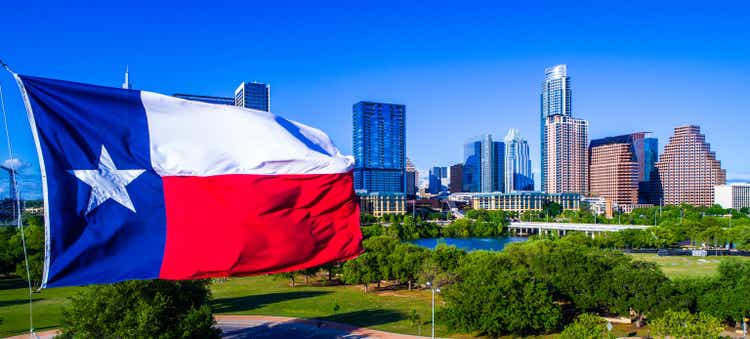
RoschetzkyIstockPhoto/iStock via Getty Images
When we can, we like to layer themes in our pursuit of informed real estate investment. We might start with a specific sector that, we feel, is going to most benefit from secular demographic and macroeconomic trends (apartments, for example). Then we follow with a geographic focus and try to identify regions that will benefit from sustaining trends of job growth and migration, like the Sun Belt. We can get really excited when we find a company that is combining these themes and bringing them to a pinpoint focus. A few years ago, we felt we found such a company in BSR Real Estate Investment Trust (OTCPK:BSRTF) (TSX:HOM.U:CA) (TSX:HOM.UN:CA) and today we will discuss why they still match those themes and why they might be opportunistically valued.
BSR REIT
Shortly after its 2018 IPO, BSRTF made clear that its intention was to sell its legacy portfolio and to recycle capital to purchase newer, multifamily assets located in targeted high-growth markets. This graph illustrates emphatically that they have put their money where their mouth was.

BSR REIT
BSR targeted Austin, Dallas, and Houston (which they refer to as the Texas Triangle) because those were the locations to which people were migrating…
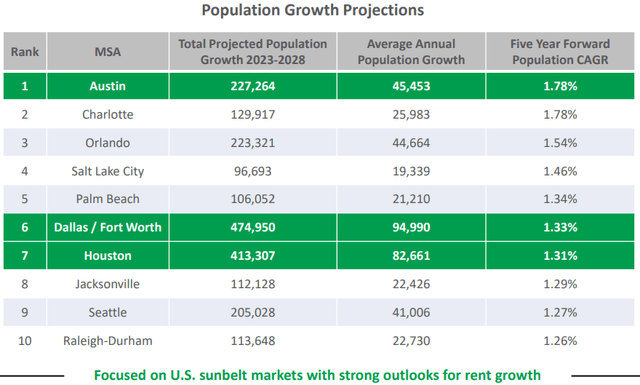
BSR REIT
… and that people were moving to those locals because that’s where the new jobs were.
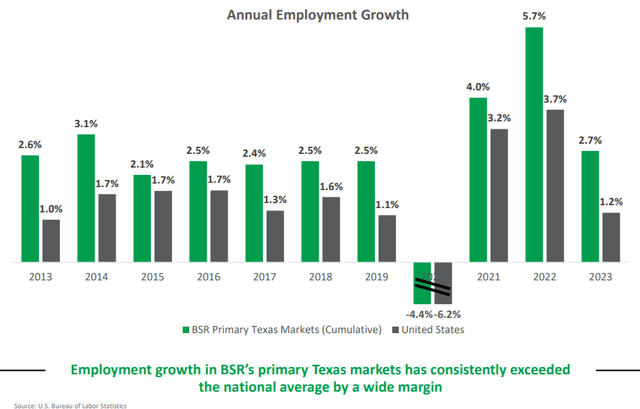
BSR REIT
The graphics indicate the migration trends will continue, so these markets will continue to provide residents affordable housing and BSR the earnings growth it was after.
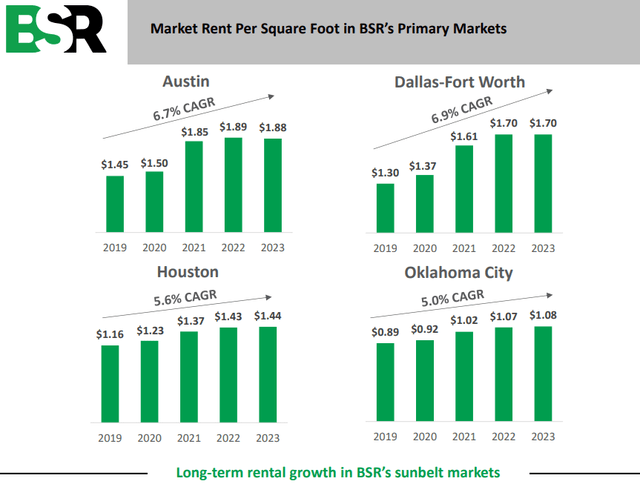
BSR REIT
BSR’s master plan has translated into steady growth of Net Operating Income and per unit FFO and AFFO.
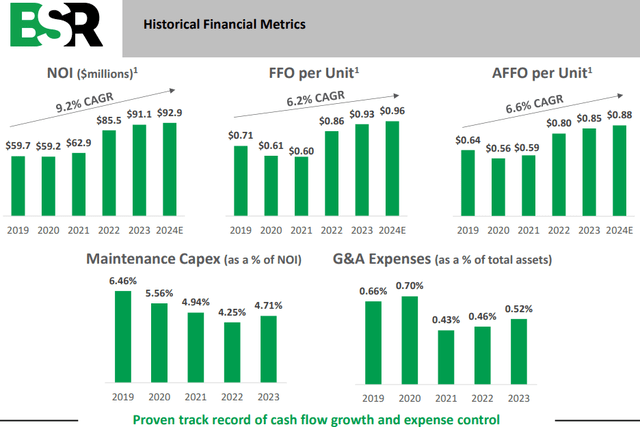
BSR REIT
Management foresaw seemingly everything but the pandemic. The pandemic accelerated the migratory trends to the Sun Belt, but it also provided previously unforeseen availability of extremely low-cost capital for developers to build a huge new supply of what BSR was buying. The result was a glut of new multifamily supply, particularly in Austin.
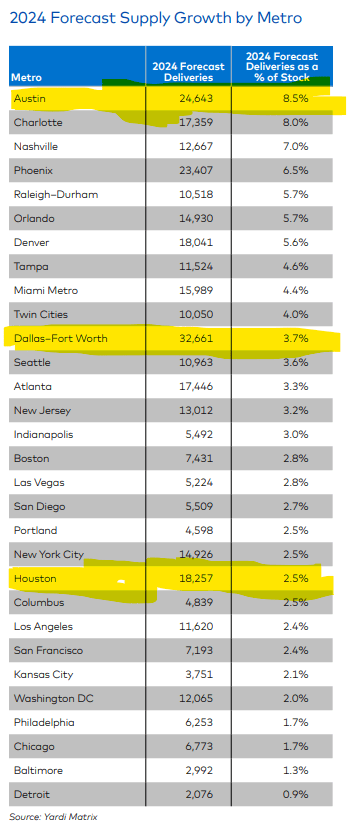
Yardi Matrix
The new supply has put a speed bump in rent growth and was sufficient to actually roll back rents in Austin and Dallas.

Yardi Matrix
One rare positive result of the Fed’s 2022 inflation fighting interest rate crusade, however, is that the easy money has dried up, and that new apartment construction has slowed to a trickle. The Texas Triangle’s jobs machine is still running strong, and the tsunami of new supply will be quickly absorbed.
The Present and the Future
After market close on August 6th, BSRTF reported strong second quarter financial results.
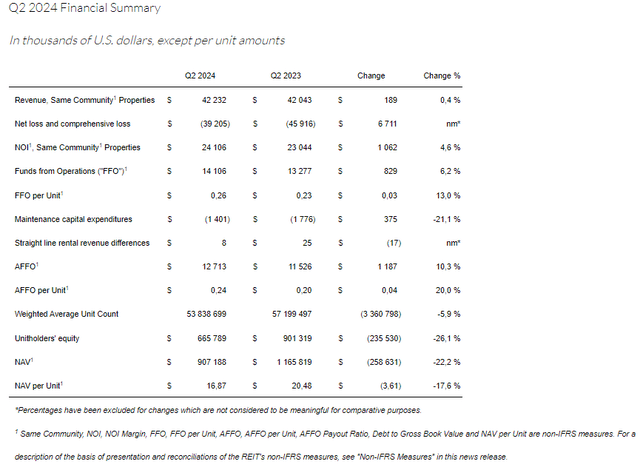
BSR REIT
Per Unit FFO and AFFO rose by 13.0% and 20.0% respectively, compared to the prior year’s quarter. NAV per Unit declined by -17.6% largely as a reflection of higher property valuation cap rates. Currently priced at $12.75, BSRTF shares are trading at a 25% discount to the reduced $16.87 per Unit NAV.
With the earnings release, management issued a slightly revised 2024 earnings guidance with the following assumptions of revenue, expenses, and net operating income.
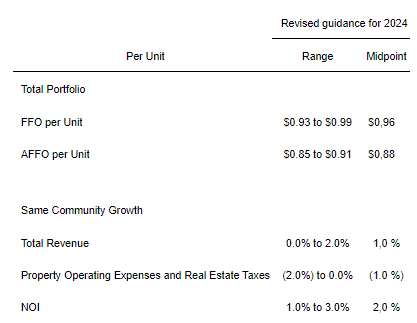
BSR REIT
At the per-Unit midpoint of $0.96, BSRTF is trading at 13.3x FFO. This compares to the multifamily sector median of 18.3x FFO, implying the shares are cheap relative to peers.
Another highlight of the call was the pre-announcement of a 7.7% hike to the dividend from $0.52/Unit to $0.56/Unit, which translates to a 4.39% yield at current prices. They made the new monthly dividend rate official with an August 15th press release.
But What’s it Worth?
We are long BSRTF because its shares are the cheapest amongst sector peers and its portfolio lets us make a pinpoint investment in some of the nation’s demographically strongest markets. To stay long, an investor has to believe the shares are worth materially more than the market price. The earnings call provided some interesting speculation as to share value, and we can’t resist elucidating that here.
Coincident to BSR’s earnings release, it was announced that Blackstone (BX) had agreed to sell a multifamily portfolio to Equity Residential (EQR) for $1 Billion. The transaction prompted the following analyst question:

S&P Global IQ
Fortunately, in a recent article, renowned polyglot, Dane Bowler stepped up to translate Dan Oberste’s comments from Arkansan. Basically, Oberste was saying that the EQR purchase price of ~$270,000 per apartment represented a valuation of as much as $100,000 per apartment higher than BSRTF’s market trading price.
We wanted to see what that variance might translate to if the whole BSR portfolio was sold in a similar trade. Our work is rough, but it might be in the ballpark.
From Management’s Discussion and Analysis August 6th filing:
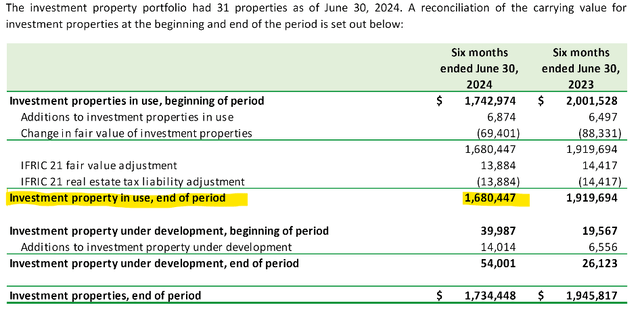
BSR REIT
In this June 30th NAV calculation, BSR values its investment property at $1,680,447,000. With 8,666 apartment units, that valuation translates to an average valuation of $193,912 per apartment and that ultimately is the basis for the $16.87 NAV for each BSRTF share.
Realizing a sale of the 8,666-apartment portfolio for an average price of $270,000 per suite would value the investment property at $2,339,820,000. Netting out liabilities brings the NAV to approximately $28/share. Wow!
Apartment values vary widely based on rental revenues, so just picking a number out of the air doesn’t prove anything. BSR management thinks the property portfolio is worth more than the share’s market pricing represents, and probably more than the $16.87 NAV.
The discount to NAV, coupled with the big dividend hike, is probably enough to make us patiently hold our shares. In the interim, we hope BSR management is talking to EQR and other institutional investors about paying up for a nice Texas multifamily portfolio.
Editor’s Note: This article discusses one or more securities that do not trade on a major U.S. exchange. Please be aware of the risks associated with these stocks.

